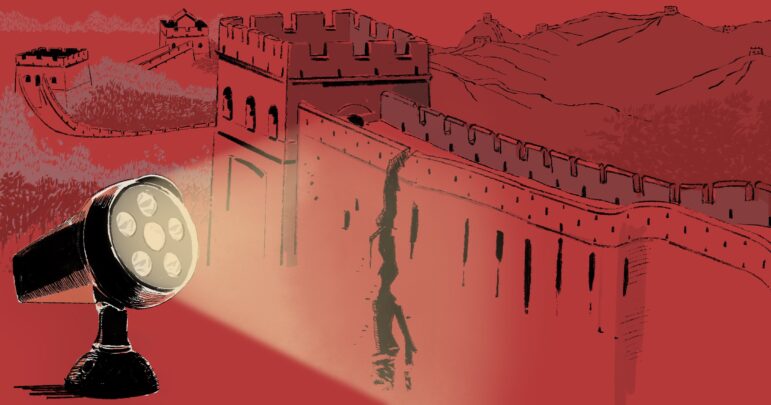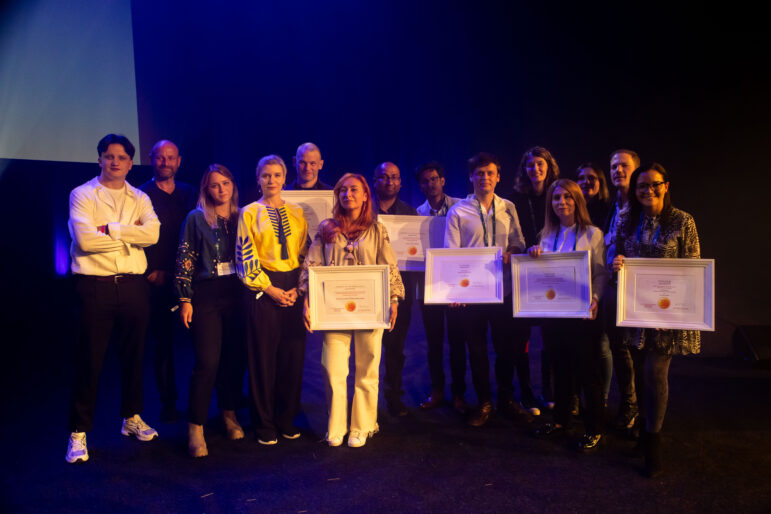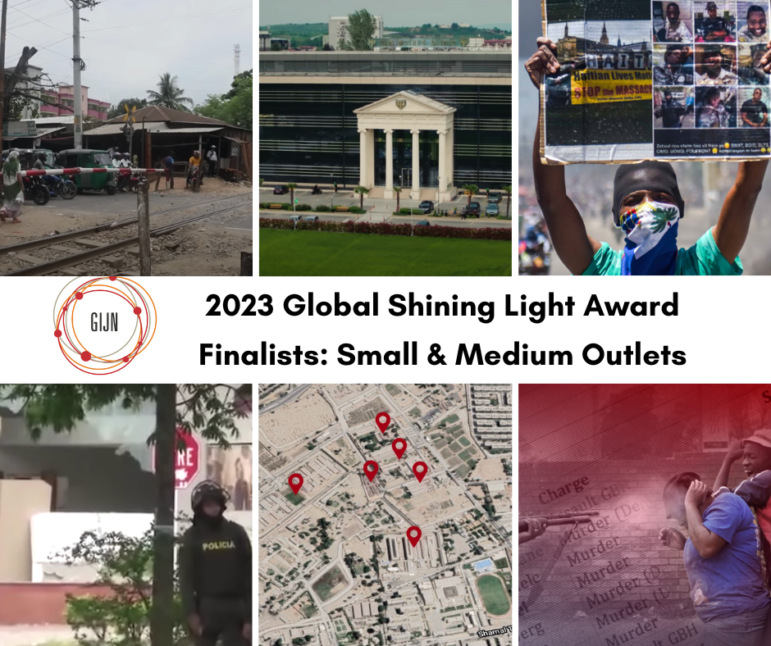

2025 Global Shining Light Award Finalists: Small and Medium Outlets
Read this article in
Today, we reveal the six entries chosen by as finalists in the Small and Medium Outlets category for the 2025 Global Shining Light Awards (GSLA) — the prize that honors watchdog journalism in developing or transitioning countries carried out under threat, or in perilous conditions. This category is defined as organizations with staff of 20 or fewer, including freelancers.
Yesterday, GIJN announced seven courageous finalists in the Large Outlets category.
The eventual winners will be showcased at an award ceremony at the 14th Global Investigative Journalism Conference (GIJC25) — the world’s premier international gathering of investigative and data journalists — to be held from November 20 to November 24, 2025, in Kuala Lumpur, Malaysia.
The competition attracted 410 entries from 97 countries, and the five-member GSLA judging panel noted that, despite fewer resources, submissions from small and medium outlets showed commendable reporting innovation and outsized impact on key public interest issues.
Finalists in this category were reported from Peru, Libya, Chile, Syria, India, and Egypt, and focused on diverse topics such as immigration, wildlife trafficking, corruption, and criminal justice system abuse. (Note: One judge who is the director of a candidate outlet — the Latin American Center for Investigative Journalism [El CLIP] — did not participate in the deliberations when entries from that outlet were considered).
“We salute the courage, the creativity, and the commitment to accountability displayed by this year’s finalists,” said Sheila Coronel, director of the Stabile Center for Investigative Journalism at Columbia University, and convenor of the prize committee. “They are shining examples of watchdog journalism, especially needed at a time when the press and democracy are under attack.”
Please join us in celebrating these courageous watchdog projects from small and medium outlets.
2025 Global Shining Light Finalists: Small and Medium Outlets Category
Ayacucho and Juliaca: Radiography of Homicides — IDL-Reporteros (Peru)
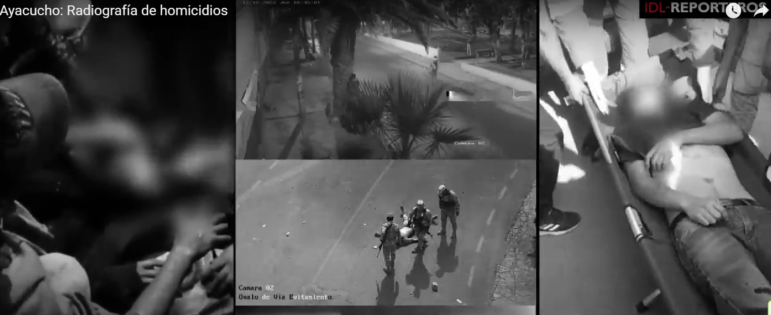
Image: Screenshot, IDL-Reporteros
In a remarkable example of quick-strike investigative work on breaking news, IDL-Reporteros dug into the true circumstances of civilian deaths during separate protests against Peruvian President Dina Boluarte. Despite government denials, an information vacuum, and an environment of military repression, the team found that the 10 civilians killed in demonstrations in the city of Ayacucho and 18 more killed in Juliaca were the victims of excessive use of force by soldiers and police — and that none of them posed an imminent threat to officers when they were fired upon.
Reporters used video clips, open source tools, records requests, and testimonies to carefully reconstruct the killings, which they said represented “extrajudicial executions.”
In addition to a state of emergency media environment, which saw a total of 153 Peruvian journalists attacked during coverage of the nationwide protests, IDL-Reporteros journalists and their sources faced intimidation and harassment by groups loyal to the regime, including threatening visits to media offices.
Delayed Execution: The Syrian Regime Detains Minors in Prisons to Execute Them Upon Reaching 18 — SIRAJ, DARAJ, SLDP (Syria)
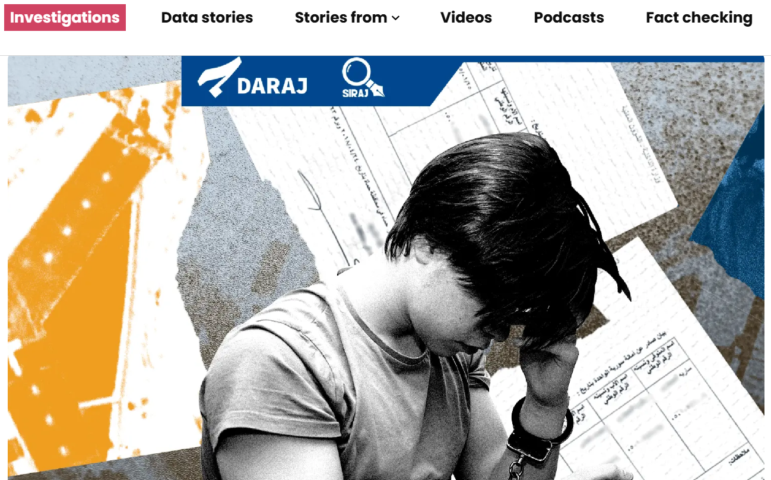
Image: Screenshot, DARAJ
Syria’s former Assad regime knew that it was illegal to execute children. So, according to this outstanding and chilling investigation by Syrian Investigative Reporting for Accountability Journalism (SIRAJ), it found a workaround that took cruelty and cynicism to its limit. The project found direct evidence that at least two dozen targeted children were simply detained without trial until their 18th birthdays, and then transferred to “military field courts” which saw them swiftly executed, often without notice to families or even the victims themselves. The investigation also revealed wider systemic human rights abuses flowing from 14,843 death sentences issued by these courts over a dozen years — including to 114 formerly detained children — including torture and psychological abuse that extended to families.
Reporters used open source intelligence techniques and satellite imagery to confirm the locations and conditions of detention sites, and, crucially, obtained leaked documents featuring internal justice system communications and arrest orders detailing how children were targeted for detention, as well as documents on names, ages, and detention dates.
GSLA judges also praised the story’s searingly powerful storytelling, including testimony from families, a sole survivor of the system that detained minors for future execution, and even from a former guard, detailing the moment-by-moment horrors of unannounced executions disguised as prison transfers.
Hermosilla Case: the Audio and Chats that Shook Power in Chile — Ciper, The Clinic (Chile)

Image: Screenshot, Ciper
In a classic corruption investigation that spanned dozens of stories, reporters at Ciper and The Clinic documented every aspect of a graft scheme in Chile, which has seen numerous prosecutions across multiple public sectors. The story began with an audio recording that showed an influential attorney proposing that his business client create a “black box” to fund bribes for public officials. Deeper investigations by the team — including transcripts of contents from his cell phone — revealed this lawyer to be a highly influential “bridge” between judiciary, business, and the administration, and that he was also contracted to the government as an advisor. Peeling back the onion layers of malfeasance among officials followed.
In addition to records obtained via Chile’s transparency law, the team accessed confidential prosecution documents and revenue service records, and conducted hundreds of interviews.
Reporters faced a smear campaign, doxxing, and several legal threats.
The Costs of Reliance’s Wildlife Ambitions — Himal (India)
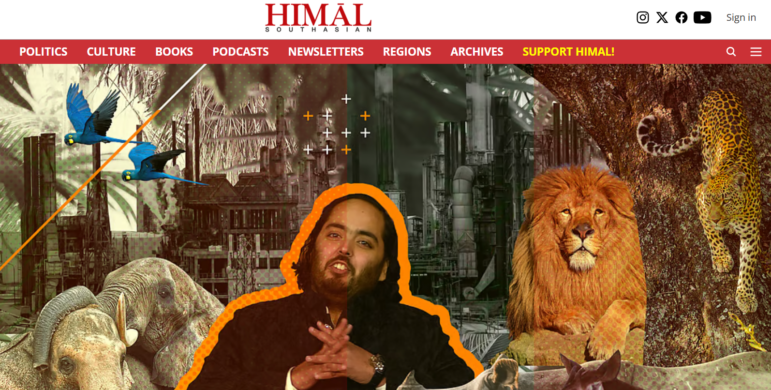
Image: Screenshot, Himal
Despite obstruction from powerful corporate and government actors, Himal probed the origin and management of endangered species at India’s most celebrated, government-endorsed wildlife rehabilitation project. In a dogged examination of a convoluted animal supply chain, including elephants from East India and endangered species from Myanmar, the team found illegal processes, allegations of animals captured in the wild, poor government oversight, and troubling implications for endangered biodiversity.
Above all, this project cast new light on a topic and practice that had been beset by silence among media and policymakers in India. The team employed classic and courageous shoe-leather reporting techniques, as well as solid data analysis and physical visits to remote facilities.
The Kalamata Trap: Hundreds of Migrants Drown on Their Way to Europe — ARIJ – Arab Reporters for Investigative Journalism (Greece)
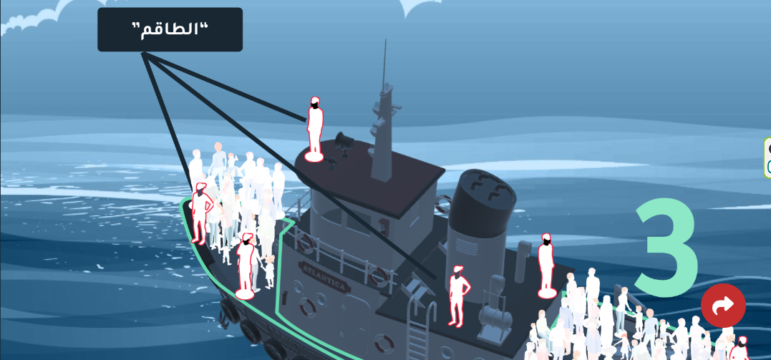
Image: Screenshot, ARIJ
This investigation exposed a legal system designed to dissuade migrants from travelling from Africa to Europe, rather than prosecuting criminal human traffickers or exposing the true causes of mass migrant drowning disasters. Focusing on a major disaster in June 2023, when approximately 750 migrants were lost after an overloaded fishing boat sank near Greece, this project by ARIJ revealed a legal “trap” in which nine Egyptian migrants were detained and prosecuted, in order to deflect political and media attention from the real causes of the catastrophe.
Having shown the myopic focus of the Greek authorities’ investigations, the project then revealed the other parties culpable in this and other migrant maritime disasters. This included interviews with traffickers and a detailed mapping of the people smuggling network in North Africa, as well as documentation of systemic failures by Greek officials.
Describing the piece as “very powerful,” GSLA judges noted that the story was “well documented, and really does trace the chronology of what happened in the shipping disaster.”
The Russian Trap: Recruiting Egyptians with the Lure of Money and Nationality — Masrawy (Egypt)
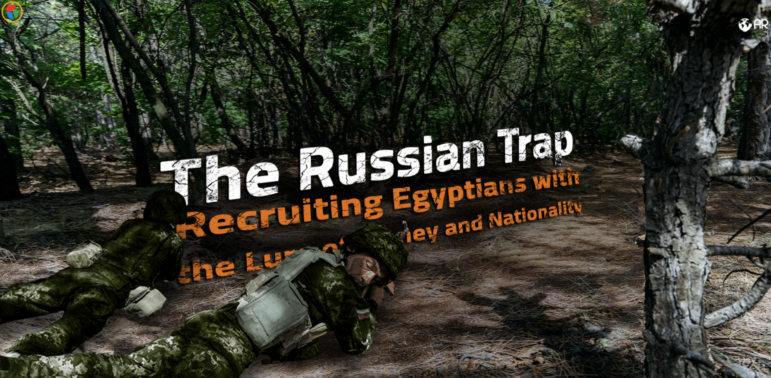
Image: Screenshot, Masrawy
Some investigative stories simply stun audiences with answers to questions that few had even asked. This project not only revealed a hidden, sinister effort to recruit young Arab men for Russia’s war on Ukraine — including Egyptian students in particular — but also provided revealing details on how Russia changed its recruitment criteria to lure foreign-born men into deadly peril.
The story revealed the cluster of financial and immigration promises made to volunteers, the role of Russian and Egyptian brokers, and the inadequate training provided to young Egyptians quickly sent to the front lines. But the GSLA panel was also impressed with the deeper storytelling, which revealed the anguish of the families of soldiers who were often left utterly in the dark about the fate of their loved ones.
Facing safety risks from multiple bad actors, the lead reporter was forced to take extensive security precautions to keep sources, project data, and editorial staff safe, and endured surveillance and harassment after publication.
The team obtained key, hard-to-get documents for their findings, including contracts signed between the young Egyptians and both their Russian brokers and their military units, missing persons complaints submitted to the Egyptian Ministry of Foreign Affairs, and travel visas issued to potential recruits by the Russian government — in some cases, simple tourist visas.
 Rowan Philp is GIJN’s global reporter and impact editor for GIJN. Rowan was formerly chief reporter for South Africa’s Sunday Times. As a foreign correspondent, he has reported on news, politics, corruption, and conflict from more than two dozen countries around the world.
Rowan Philp is GIJN’s global reporter and impact editor for GIJN. Rowan was formerly chief reporter for South Africa’s Sunday Times. As a foreign correspondent, he has reported on news, politics, corruption, and conflict from more than two dozen countries around the world.


